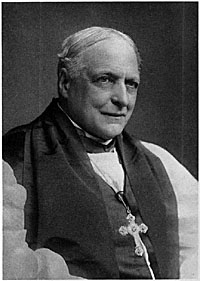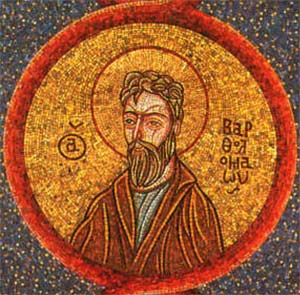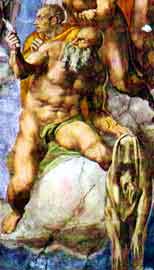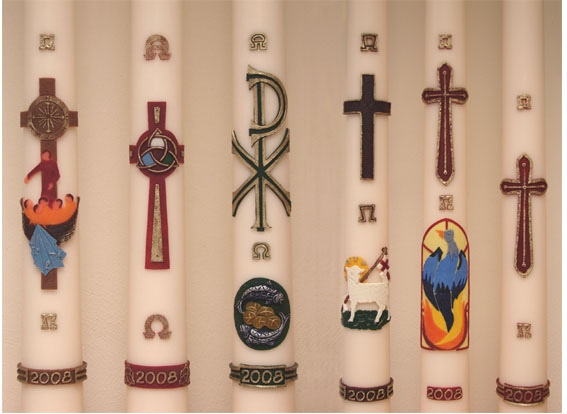However, this feast was thrown off the liturgical calendar of the Church of England at the time of the Reformation. Was it because the Church of England didn’t like to celebrate the feast days of Saints? Not at all. If you look in the Book of Common Prayer of 1662 you see feasts for all of the biblical Saints, including red letter feast days for Mary—there are the feasts of the Purification of the Virgin Mary and Annunciation of the Blessed Virgin Mary—again as red letter feasts with their own appointed collects and lessons. In the list of lesser feasts of the 1662 Prayer Book there is also the feast of Conception of the Virgin Mary.
However, the primary or principle pre-reformation feast of the Virgin Mary was pointedly omitted from both the list of red letter primary feasts and black letter lesser feasts. Why is this?

Well, we must consider that during the time of the Reformation there were many abuses related to the saints—excessive devotion to specific saints was one of those abuses. Indeed, one could call it the cult of the saints. Chief among those individuals around whom cults had developed was the Virgin Mary. There had arisen so many specific and esoteric beliefs about Mary by the late middle ages that the theological study of Mary herself had developed—Mariology, as we now know it.
The Church of England attempted to keep a middle path between ignoring the feast days of the saints altogether and keeping them as they had been kept before the Reformation. The primary calendar omits all but the Biblical saints, and the list of lesser feasts and fasts kept only the feast days of the saints of the undivided Church.—Saint Cyprian, Saint Augustine, etc. While it kept the Biblical feasts of Mary, her primary feast was set aside, because at the time it was not simply the Feast of Saint Mary the Virgin, it was the Feast of the Assumption of the Virgin Mary—which means, of course, that she was assumed bodily into heaven. This belief had arisen around the 5th or 6th century and was based upon fanciful and apocryphal writings from the 4th century. The belief in the Assumption became accepted teaching in the 7th century Eastern Church. As the Roman Catholic historian Eatmon Duffy points out, “there is, clearly, no historical evidence whatever for it.”
Since this belief had no scriptural warrant the feast bearing the name of the Assumption was—rightly I believe—done away with in the official calendar of the Church of England. As I said, this does not mean that Anglicanism had forgotten the saints of the Church, nor did it mean that it had forgotten one of the primary saints of the New Testament. The goal of the new red letter calendar of Saints of the Book of Common Prayer was to make their celebration Christocentric in nature—the black letter lesser feasts and fasts pointed to the life of the ancient Church. The goal of the Saints was to point to Christ, and keeping the feast of the Assumption made this rather difficult , since it was centered around a nonbiblical and ahistorical event, and required numerous theological explanations and justifications.

When this once primary feast of Mary was reintroduced as a lesser feasts in America, Scotland, England, and Canada, mention of the Assumption was omitted, and now it was simply the feast of the BVM, Saint Mary the Virgin, or in its strongest form the
“Falling Asleep of the Blessed Virgin Mary” (which is also the Eastern Orthodox title for the Feast). Now we have a feast of Mary that can celebrate the entirety of her life in relation to Christ, rather than celebrating an apocryphal event. This reminds one of the fact that in Orthodox iconography Mary is always to be presented holding the Christ Child, never alone (as she often is in the West), for her primary theological importance is that she was
Theotokos, which is most often translated as Mother of God, but this manner of presenting the Greek is a little misleading. In English this makes it sound as though the emphasis is on the Mother. A more literal translation would be “she who gave birth to Him who was God”—and here the emphasis is on the deity of the child, not the motherhood of Mary. However, the very mention of a human mother implies the humanity of the Son, even after the divinity of the Son has been expressed and emphasized. We have here the very mystery of the Incarnation and are reminded of what Saint Paul has to say of the Person of Jesus as concerns his origin: “when the time had fully come, God sent forth his Son, born of woman, born under the law, to redeem those who were under the law, so that we might receive adoption as sons. And because you are sons, God has sent the Spirit of his Son into our hearts, crying, "Abba! Father!" So through God you are no longer a slave but a son, and if a son then an heir.”
Paul focuses on Christ’s fulfilling of the law, his humanity in conformity to his divinity to fulfill what we could fulfill not due to our sinful natures. Indeed, Paul does not even mention Mary’s name. But Mary is at the beginning of the historical drama of the Incarnation that Paul preached. In the liturgical life of the Church she appears most prominently at Christmastide, in statuary form as part of nativity displays, without prejudice in the homes of Christians of all backgrounds. The feast of Saint Mary, as well as the other Prayer Book feasts of Mary, allow us to dwell further on the biblical events surrounding this mystery from Mary’s perspective and examine what we can apply from her experience and example, to our lives.
In the gospel lesson for the feast we hear Mary rejoice in the part she will play in God’s plan of salvation. And Mary said, "My soul magnifies the Lord, and my spirit rejoices in God my Savior, for he has regarded the low estate of his handmaiden. For behold, henceforth all generations will call me blessed; for he who is mighty has done great things for me, and holy is his name. And his mercy is on those who fear him from generation to generation. He has shown strength with his arm, he has scattered the proud in the imagination of their hearts, he has put down the mighty from their thrones, and exalted those of low degree; he has filled the hungry with good things, and the rich he has sent empty away. He has helped his servant Israel, in remembrance of his mercy, as he spoke to our fathers, to Abraham and to his posterity for ever."
Her soul magnifies God. Her spirit rejoices in Her savoir. This song of praise echoes Luke’s Gospel from just a few verses earlier where Mary tells the angel Gabriel:
"Behold, I am the handmaid of the Lord; let it be to me according to your word."
And Elizabeth’s words to Mary: "Blessed are you among women, and blessed is the fruit of your womb! And why is this granted me, that the mother of my Lord should come to me? For behold, when the voice of your greeting came to my ears, the babe in my womb leaped for joy. And blessed is she who believed that there would be a fulfilment of what was spoken to her from the Lord."
She hears God’s word. She counts herself blessed to be chosen by God. She responds to God’s word obediently. Luke tells us that Mary pondered all these wonderful and strange events in her heart, but it does not tell us that she fully comprehended these events. Indeed, Luke tells us that Mary and Joseph did not understand what Jesus meant when they found him in the temple and he told them Did you not know that I must be in my Father's house?" Mary’s reaction can teach us about our own reactions to Christ ‘s role and work in our lives. Sometimes we won’t understand. Sometimes we have to wait and see. As Jesus grew in wisdom and in stature there were still times when Mary and Jesus’ brothers, in their inability to comprehend His work, sought after Him to bring Him home. Mark’s Gospel tells us that Jesus’ family thought He was crazy and attempted to seize Him. All we can do is wonder what Mary thought. We know that Mary knew the Jesus’ true origins, but we cannot know what she thought of the path His ministry had taken. Even if she knew He was the Messiah, like so many of Jesus’ disciples she may have misunderstood His actions.
However, even if Mary (and many of the disciples) didn’t fully understand the work of her Son, she was present in His earthly life until the end. John’s Gospel and Mark’s Gospel attest to her continued presence. We find her at the foot of the Cross. Ultimately, we find her as well at the founding of the Church in the Book of Acts. “All these with one accord devoted themselves to prayer, together with the women and Mary the mother of Jesus, and with his brothers.”

While we cannot say that Mary was
assumed into Heaven, or that she was perfect in all of her actions, we can say that she was blessed amongst women, blessed for all generations, a woman who rejoiced in the knowledge that she needed a savior and that in her God she had a savior. We can say that she followed her Son her entire life, saw her own flesh and blood suffer and die a painful death upon the cross. . .and still find her in the Upper Room, rejoicing once again in the knowledge of her own salvation through Jesus Christ, fully God and fully man, her Son and our Lord. So, in Mary’s life we see the grace of God, reliance upon that grace, obedience to the will of God, and persistence in her faith through times of doubt, inability to comprehend, and probably fear. We see ultimate persistence. Let us pray that we too will be filled with grace, conformed to the will of God, and persist to the end in the Christian life that is laid before us.



















